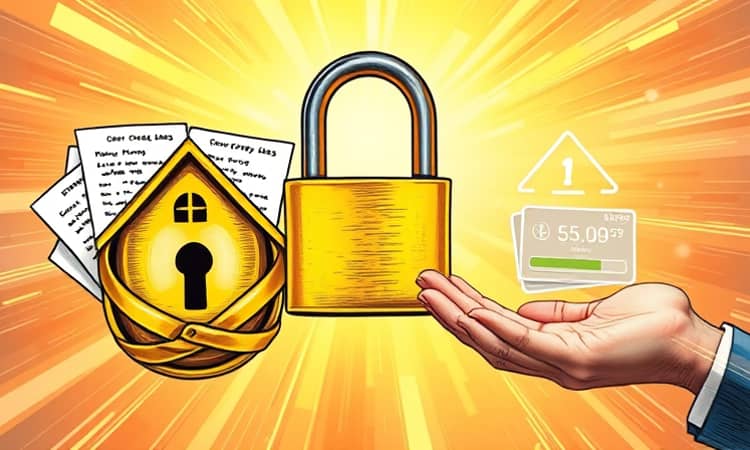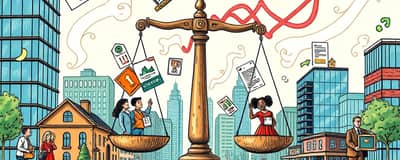Choosing the right loan can feel overwhelming in a market flooded with options. Understanding the fundamental differences between secured and unsecured loans is key to making informed financial decisions that align with your long-term goals.
Understanding Loan Basics
At their core, loans fall into two categories based on whether collateral is required. A secured loan is backed by tangible assets—such as homes, vehicles, or savings—that a lender can seize if you default. This collateral reduces lender risk and often leads to lower interest rates and higher borrowing limits.
By contrast, an unsecured loan relies solely on your creditworthiness and promise to repay. With no collateral at stake, these loans carry higher interest rates and stricter approval criteria, but they spare your personal assets from seizure.
Key Differences at a Glance
Comparing secured and unsecured loans side by side can clarify which option fits your situation best.
Types of Secured and Unsecured Loans
Secured loans are attractive when you have valuable assets and seek lower interest rates or larger amounts.
- Mortgages (fixed 15- or 30-year terms)
- Vehicle and auto loans
- Home equity loans and HELOCs
- Secured personal loans and credit cards
- Pawnshop, title, and share-secured loans
Unsecured loans suit borrowers who value greater flexibility and have solid credit histories.
- Personal and signature loans
- Credit cards
- Student loans
Pros and Cons
Every financial decision involves trade-offs. Recognizing these pros and cons helps you choose wisely.
Secured loans offer:
- Lower interest rates due to collateral backing
- Higher borrowing limits and flexible terms
- Easier approval for those with imperfect credit
However, they carry the risk of asset seizure, and repayment issues can lead to long-term credit damage. Unsecured loans remove collateral risk but often mean paying higher rates and undergoing a more stringent credit check. Defaulting can still harm your credit profile severely.
How Loans Work
The application processes for secured and unsecured loans differ in complexity and documentation requirements. Secured loans demand collateral appraisal and verification of ownership, extending the approval timeline. Lenders closely evaluate the asset’s value against the loan amount to maintain a balanced loan-to-value ratio.
Unsecured loans focus on income verification, credit history, and debt-to-income ratios. With swift underwriting procedures, you can receive funds more quickly, though at the expense of higher interest rates to offset lender risk.
Choosing the Right Option
Selecting between secured and unsecured financing depends on several factors. Start by evaluating your borrowing needs: do you require a large sum for a home purchase, or a smaller amount for debt consolidation? Assess your asset availability for collateral and your comfort level with potential asset forfeiture. Compare interest rates and loan terms, and factor in how each loan will influence your monthly budget.
Real-World Scenarios
Consider these typical use cases to guide your decision:
Home Purchase: A secured mortgage offers low rates and substantial amounts, ideal for long-term investments. Car acquisition often aligns with auto loans secured by the vehicle itself. For short-term projects like renovations, a HELOC taps into home equity with flexible withdrawal options.
In contrast, emergencies and smaller expenses frequently rely on unsecured personal loans or credit cards for immediate access. Debt consolidation may use either type, trading multiple high-rate debts for a single payment with more favorable terms.
Impact on Your Credit
Both loan types influence your credit score through payment history, utilization ratios, and the age of the account. Secured loans that you repay on time can build long-term credit resilience. Defaults, however, can trigger foreclosures or repossessions, with severe credit consequences for years.
Unsecured loans also affect your credit directly: timely payments boost your score, while delinquencies carry immediate damage. To maintain a strong profile, set up automatic payments, monitor your balances, and avoid maxing out credit lines.
Market Trends and Future Outlook
Current economic conditions shape interest rates and loan availability. While secured loan rates tend to track central bank benchmarks, unsecured rates respond to consumer credit risk assessments. As digital lending platforms expand, borrowers may find more personalized underwriting and quicker approvals for both loan categories.
In uncertain markets, lenders may tighten credit requirements, making collateral-backed loans more appealing for stable borrowers. Keep an eye on inflation trends and regulatory changes that influence loan terms and consumer protections.
Conclusion
Understanding the nuances between secured and unsecured loans empowers you to tailor financing to your unique situation. Weigh collateral requirements against interest rates, approval speed, and potential credit impact. With careful consideration and strategic planning, you can secure the funding you need while safeguarding your financial future.
References
- https://www.investopedia.com/secured-vs-unsecured-loans-7558592
- https://www.lendingtree.com/personal/unsecured-vs-secured-personal-loans/
- https://www.transunion.com/article/unsecured-vs-secured-loans
- https://www.pnc.com/insights/personal-finance/borrow/secured-vs-unsecured-loans.html
- https://www.bankrate.com/loans/personal-loans/secured-vs-unsecured-personal-loans/
- https://www.investopedia.com/secured-loans-5076025
- https://www.investopedia.com/terms/l/loan.asp
- https://www.key.com/personal/banking101/secure-vs-unsecured-loan.html














